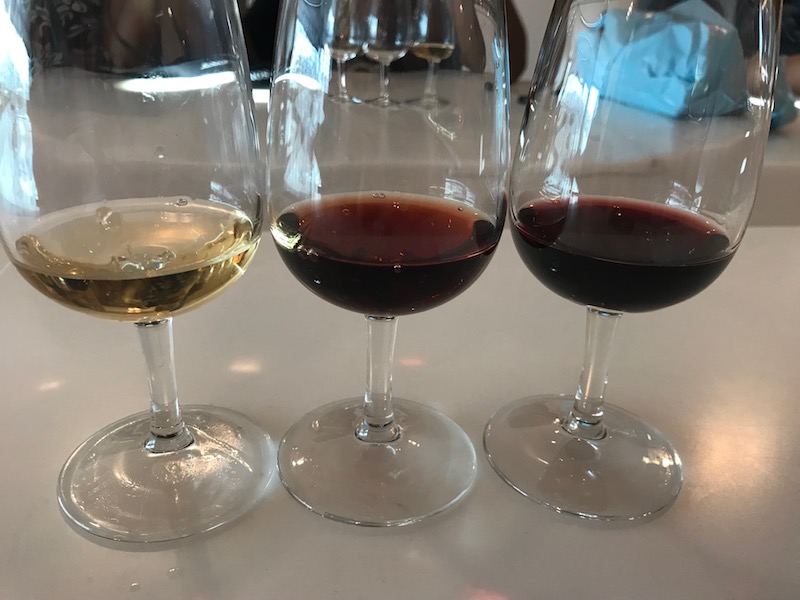Our Blog - Porto, Portugal (Day 1)
Porto is the 2nd largest city in Portugal after Lisbon. Size-wise, it is large and sprawling. The "city proper" only has 237,000 people but the metropolitan area tops out at about 1.8 million. It is located along the Douro river estuary, and many people will talk about the Douro River as a great wine region. Also dating back to the Romans, called Portus Cale at that time, it is mainly known for Port wine.
We spent 2 days in Porto and we started with lunch at a large Mercado near the water. A BBQ sandwich, chips, and of course, Sangria!
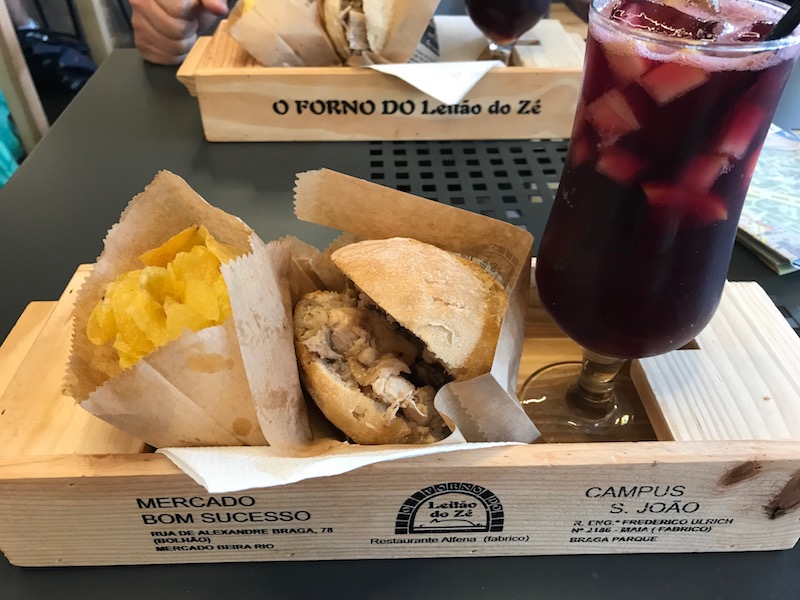
The actual city of Porto is on the hill overlooking the Douro River, and the other side of the river is called Vila Nova de Gaia (or just Gaia). Interesting story that gets told in the Port cellars, that are on the Gaia side of the river, is that all of the wine producers are on that side of the river due to the low taxes. But it was important to be "on" the river itself for transporting the wine. The Ribeira district is the oldest district of the city and is filled with ancient houses, narrow cobbled streets, and most of the tourist sights. You can see it rise up on the hill from the river. You can see some small little boats, those are Rabelo boats and historically, they were used to transport the port barrels from the Douro Valley.



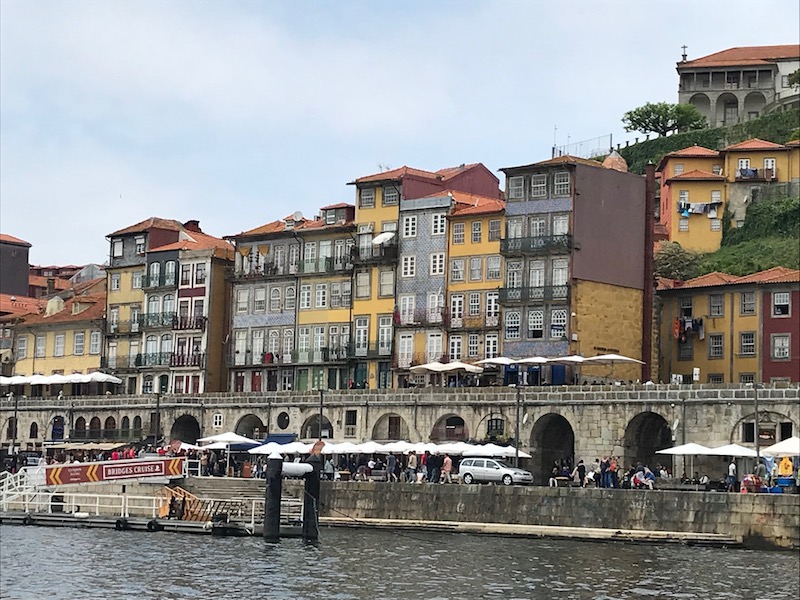
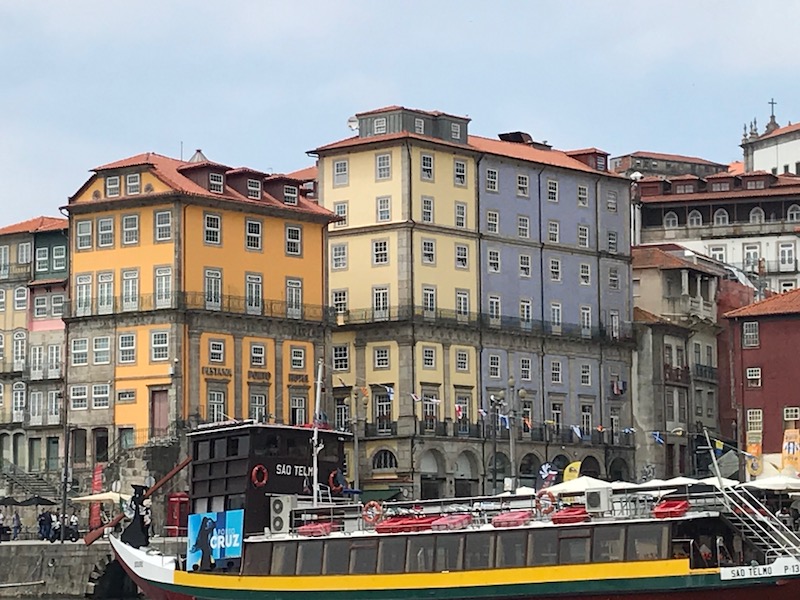
We did a boat tour on the river (yep, we're tourists!). From the boat, you can see the Muralha Fernandina, or Walls of Fernando. A series of walls around the city were started in 1336 and finished in 1376 during the reign of King Fernando (hence the name). Most of the walls and gates have since been destroyed, but you an see this preserved part on the cliffs of Cuindais.

Porto is known for it's port wine (we'll get to this later) but also its bridges, and is known as "The City of Bridges". I'll show them chronologically :-)
Maria Pia Bridge is the oldest bridge, also known as Dona Maria. It was a railway bridge, built in 1877 by Gustave Eiffel (of the Eiffel Tower in Paris) and is named after the Queen of Portugal at that time. The bridge is not used today and most people would think that it would have been torn down. However, it is very popular and treasured by locals and therefore, it still remains.

The most famous bridge is the Dom Luis I Bridge, which was built in 1886 by a follower/fan of Eiffel, and, therefore, looks a lot like the Maria Pia Bridge. You can easily tell the difference as this one has a both the top level and a lower level. Originally, both levels were designed to have road traffic but today, only the lower level has cars (and buses and pedestrians). The upper level is reserved for the metro. Once, it was considered the longest metallic arch bridge in the world. Although those times are long gone, the beauty and the magnificence of the Don Luis I bridge remain untouched.
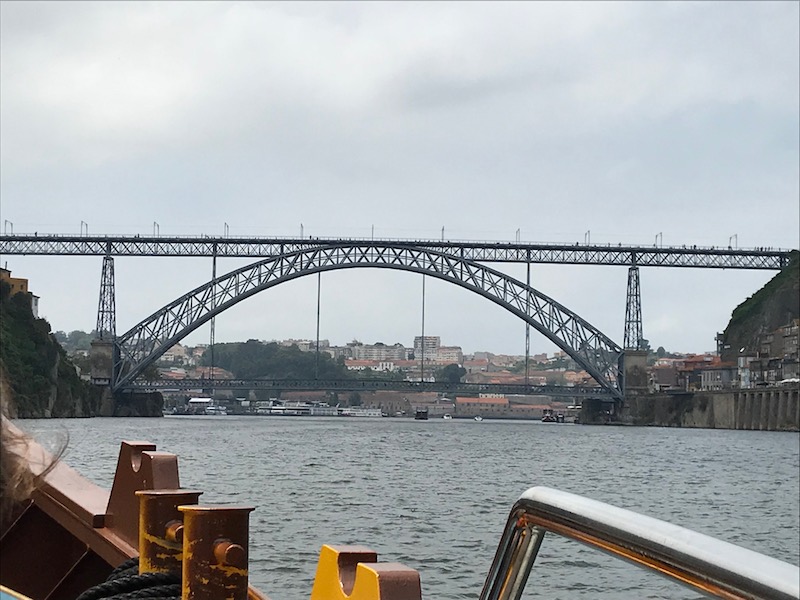
The Arrabida Bridge is considered by some the least attractive Porto bridge by the locals, but a favorite by tourists. It was designed by the best bridge engineer of Portugal and opened in 1963. Although it has since lost the title, when it was opened it held the title for the concrete bridge with the longest arch in the world (270 meters long).
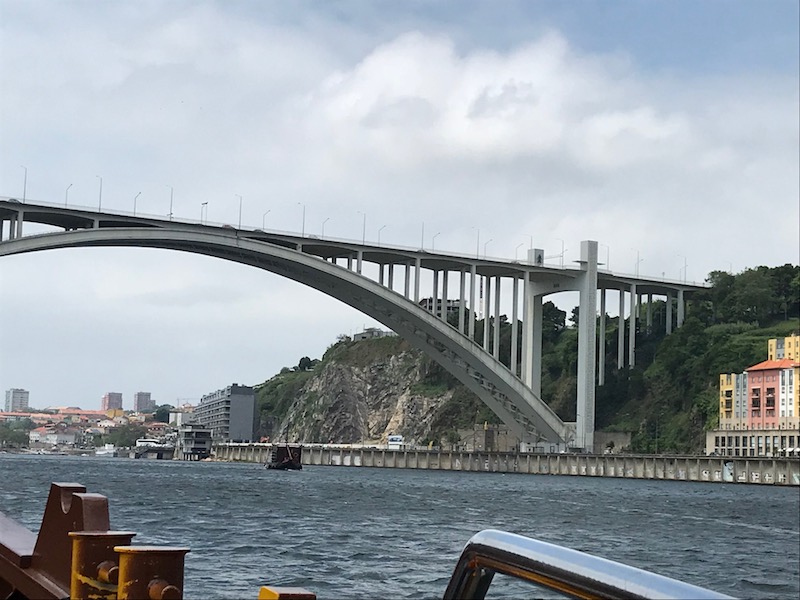
The Maria Pia Bridge was replaced by the futuristic-looking São João Bridge, built between 1984 and 1991. It is located close to Maria Pia and has a span of 250 meters. It is only used for the railroad and although some people find the simple, futuristic look interesting, it isn't quite as popular as the other bridges.

The Infante D. Henrique Bridge is the newest bridge, and, like the São João Bridge, is very simple in its design. The bridge is quite large, spanning 280 meters with a total length of 370 meters. While I don't remember seeing it at night, supposedly it is quite lovely at night when it is lit up.
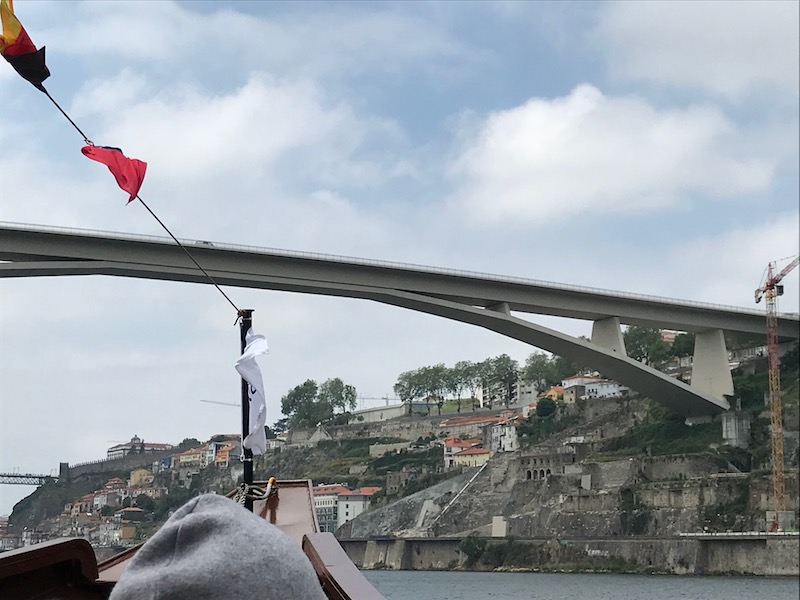
Mosteiro da Serra do Pilar sits up on the hilltop and is a former 16th century monastery. The interesting part of this (other than it's great location on the clifftop on the Gaia side) is that the church and cloisters are laid out in a circular design, which is unique in Portugal. It has been a military barracks since the start of the 20th century, so the soldiers there would seem to have the best view of the city :-)
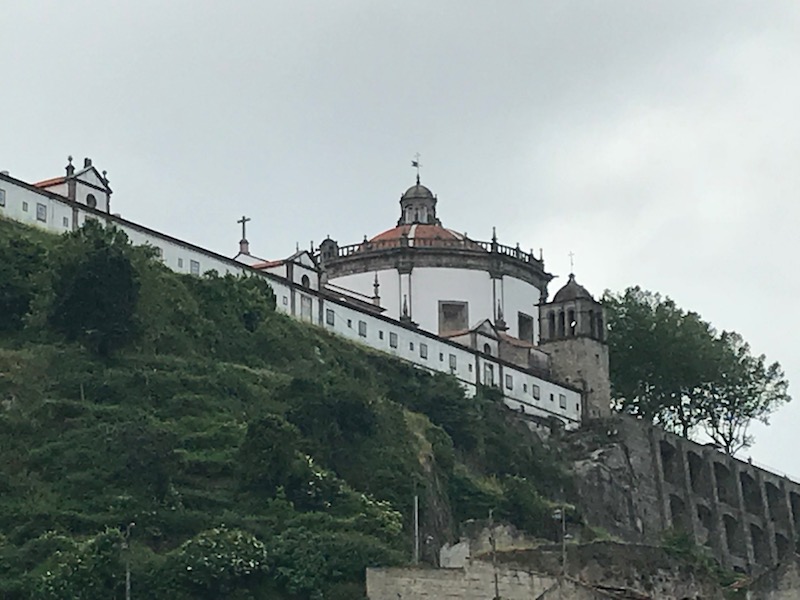
The large white building is the Paço Episcopal (Episcopal Palace), a former bishops' residence featuring rococo architectural details. It also sits up on the top of the hill near the Porto Cathedral. The original palace was built in the 12th or 13th centuries in a Romanesque style although this one dates from the late 1700's. There are still some romanesque-style windows inside the current building from that older 12th/13th century one.

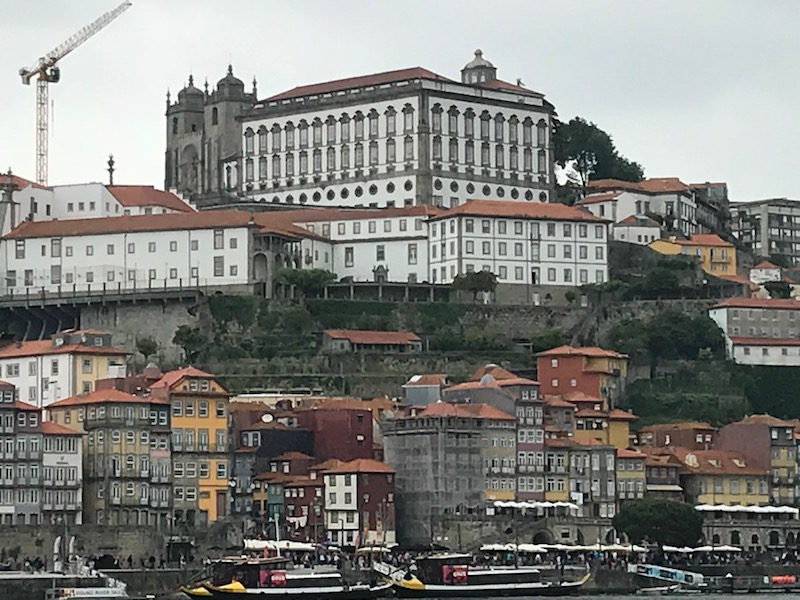
The Viaduto do Cais das Pedras is a bit interesting, where they built a walkway and road over water.

Porto is famous for the Port wines, so I'll explain what those are (for anyone who doesn't know). Port wine is a fortified wine, which means that they take normal wine and then stop the fermentation process by adding brandy. This leaves residual sugar (hence it is sweeter) and also boosts the alcohol content (normally 19% to 20%).
We did a Port Wine tour, and we went to 3 different cellars. The first one, Quinta de Santa Eufemia, has been in the Carvalho family since it was founded in 1864 and is now on the 4th generation. There are multiple types: Ruby, Tawny, White, Vintage, Late Bottle Vintage ... all tend to go through a similar process but have slight differences. For example, Ruby ages for 3 years in stainless steel vats, while Ruby Reserve spends 6 years in stainless steel. Probably the most known is Tawny Port, which ages 4 years in French Oak barrels. The brown color comes from oxidation from the oxygen that comes through the barrels. The number of years for a port (like a 10-year Tawny) is an average of the number of years aged, so within a single 10-year Tawny, you could have some that was aged less than 10 and some more than 10 (so multiple harvests included). Vintage means that it is made from grapes from a single harvest and aren't filtered. This means that they improve with age.
As we left that cellar, we saw an interesting piece of Street art ...

Port #2 came from Ramos Pinto, and here we got a good tour of the cellars. Here you can see the oak barrels. There are 2 different sizes ... the larger one gives less "flavor" than the smaller ones as the wine ends up not coming into contact with the wood as long. Here we tasted a Reserve White (the golden one) and a Ruby.
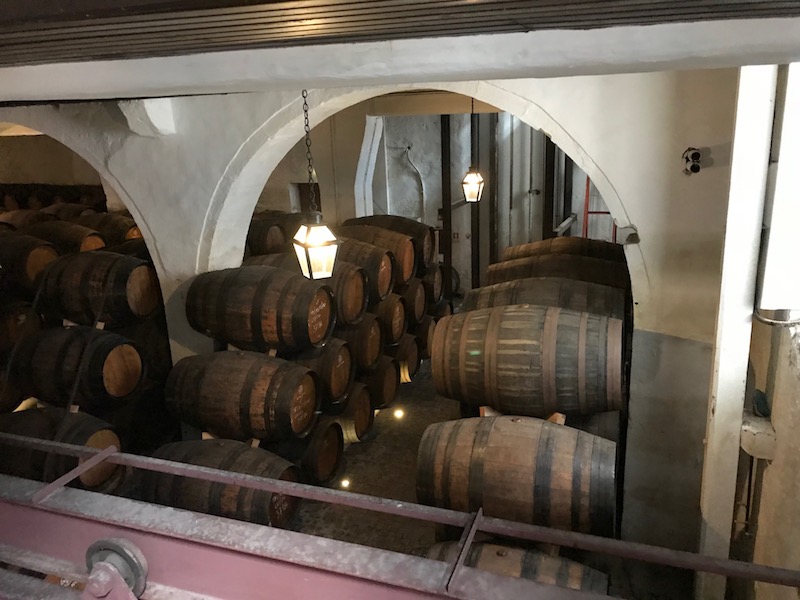
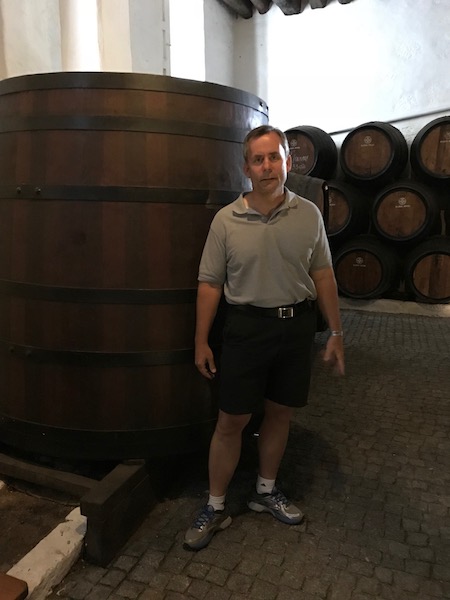
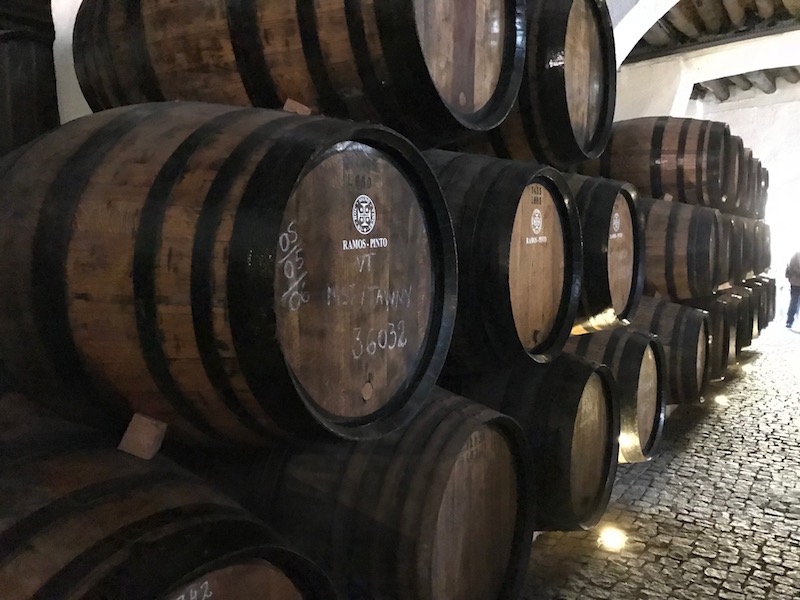
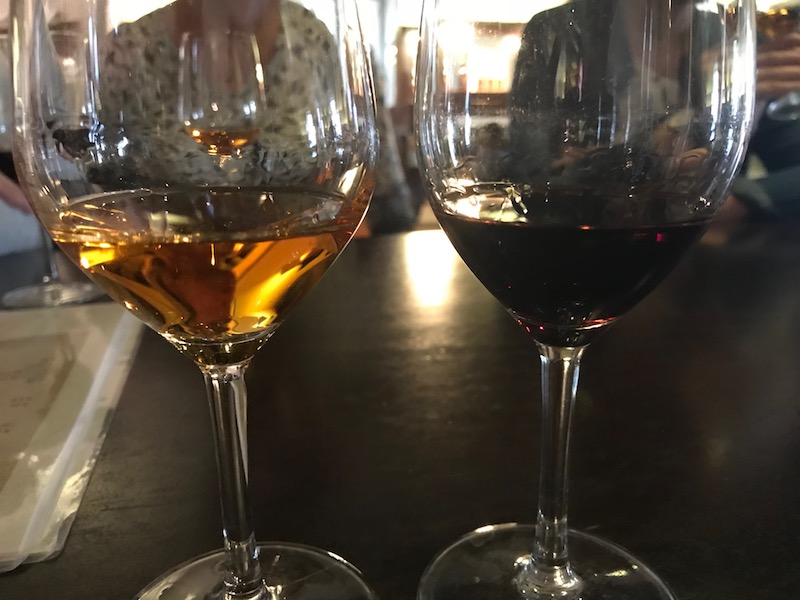
Porto Cruz was an interesting cellar, as you can clearly see that they are trying to appeal to the younger generation. They have a rooftop terrace where you can get a great view from the Gaia side of the river.
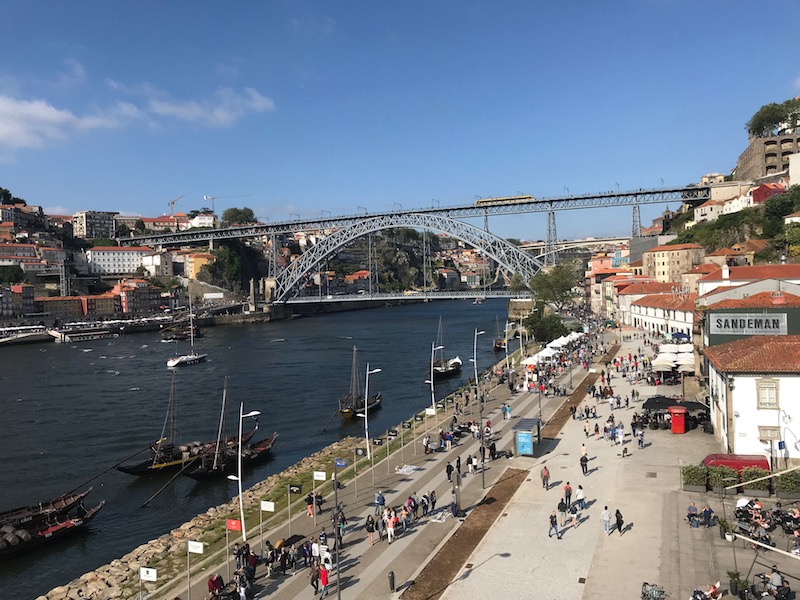
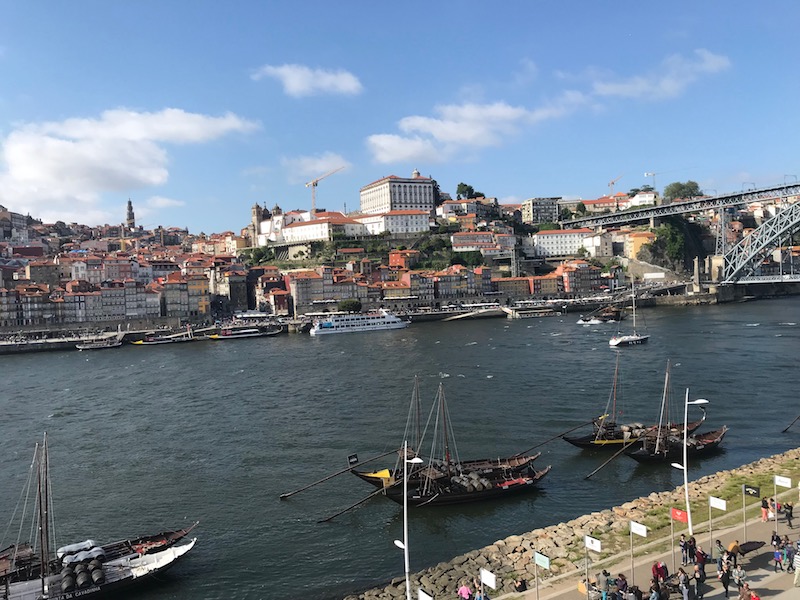
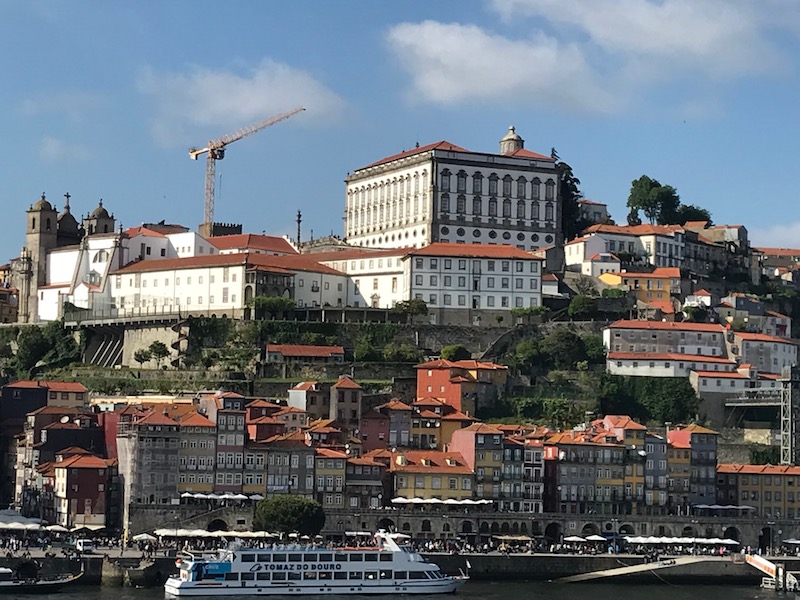
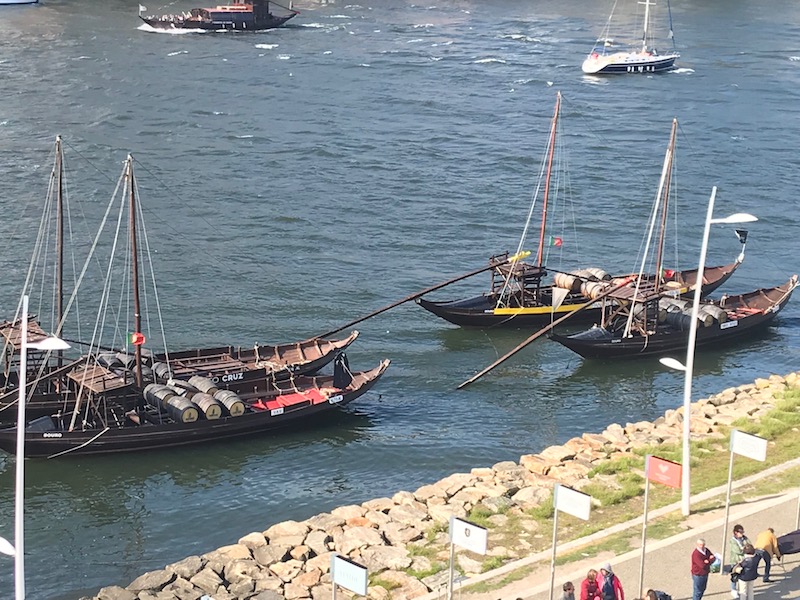
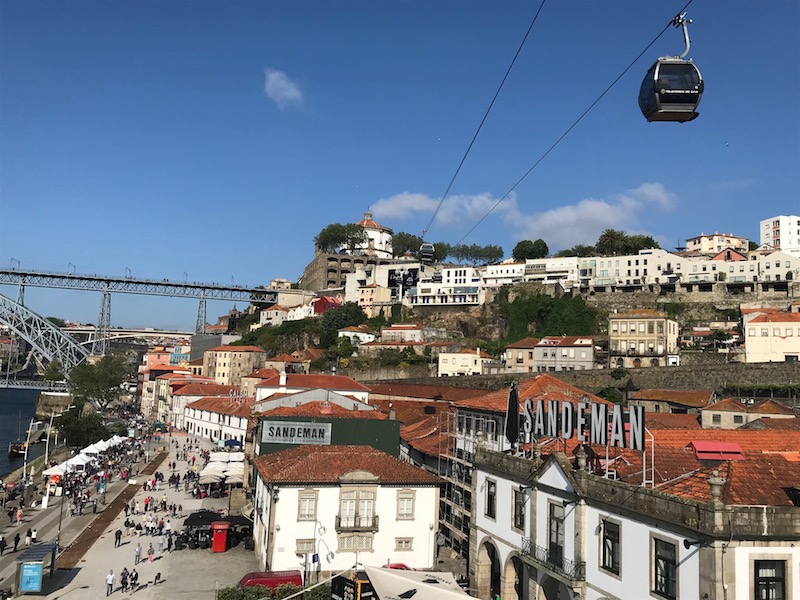
Here we tasted 3 different ones: a White port, a Ruby port, and a Tawny port. A note here on the white port ... White port is made from White grapes, and the tend to be more for the younger crowd, and sometimes used for cocktails (there is also a Rose port that is almost only used for cocktails). When white ports are matured in wood for long periods, the color darkens, eventually reaching a point where it can be hard to discern (from appearance alone) whether the original wine was red or white.
